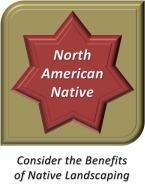Baldcypress
Taxodium distichum
SIZE: 50’ to 70’ tall by 20’ to 30’ wide
HARDINESS: zone 4 to 11
LIGHT: full sun
SHAPE: pyramidal
RATE: moderate
FLOWERS: inconspicuous
OTHER FEATURES:
Majestic in size, texture, and shape
Picturesque in old age
Forms root “knees” in shallow water when planted in or near the water
Attractive reddish brown bark with distinct texture
Bright yellow-green leaves in spring
Sage-green leaves in summer
Carmel-orange fall color
Deciduous (leaves do not persist in winter) conifer (cone-bearing plant)
Adaptable to a variety of soil types
Native to much of eastern and south central United States
Consider the Benefits of Native Landscaping!
POSSIBLE LANDSCAPE USES:
Groupings on a large estate, especially near a lake’s edge or on an island
Accent tree for a large lawn
Solution for very wet soils
See Tips for Designing your home landscape.
PRUNING:
Do not prune or fertilize after July; this promotes late-season growth that is vulnerable to winter damage.
Learn about Basic Pruning Principles.
COMPANION PLANTS:
In very large spaces with moist soil, use baldcypress to frame and compliment weeping willow trees. Other plants that can tolerate wet soils include Virginia sweetspire, swamp milkweed, buttonbush, common winterberry, rosemallow, and common ninebark.
To create a romantic garden setting in locations with average moisture, consider Henry Lauder’s walking stick for its twisting branches, common serviceberry for its delicate white flowers, and various ornamental grasses that soften the landscape.
OTHER CONSIDERATIONS:
Unlike most conifers, baldcypress loses its leaves each winter. Do not be alarmed when the tree becomes very thin in the fall.
Water regularly during the first year to establish a healthy root system.
